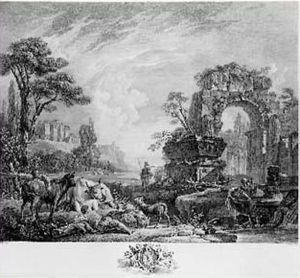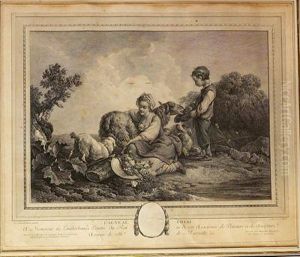Jean-Jacques Le Veau Paintings
Jean-Jacques Le Veau was a French engraver and illustrator born in 1729. He is not as widely known as some of his contemporaries, but he made significant contributions to the art of engraving during the 18th century. Le Veau was active during the Rococo period, which was characterized by ornate and decorative art that emphasized asymmetry and fluid curves. This style was a reaction against the strict regulations of the Baroque era and was seen as a more playful and frivolous aesthetic.
Le Veau’s works included a variety of subjects, such as genre scenes, portraits, and historical events. He was particularly adept at capturing the intricacies of fabric and the subtleties of human expression. His engravings often served as illustrations for books and were thus an integral part of the literary culture of his time. Through these illustrations, Le Veau helped to disseminate the popular styles and themes of the period.
Despite his skills and contributions, Le Veau did not achieve the same level of fame as some of his peers. Nevertheless, his works are valuable to art historians for their representation of 18th-century aesthetics and culture. Le Veau's death came in 1785, and while he may not have been celebrated in his time as a leading artist, his engravings continue to provide insight into the visual culture of the French Rococo period.

